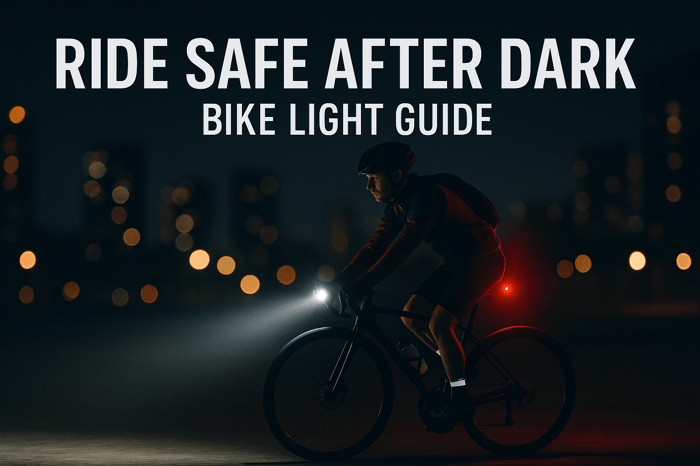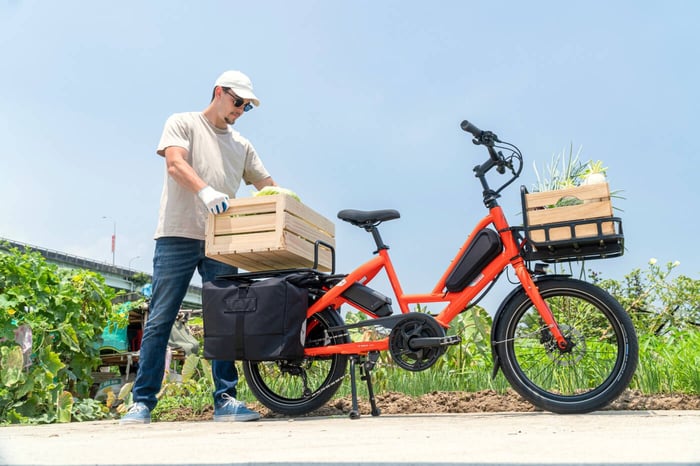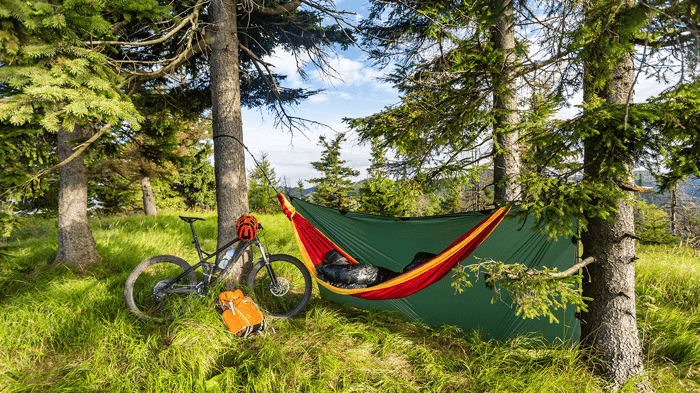Table of Contents
Ride Safe After Dark: The No-Nonsense Bike Light Guide
See more. Be seen sooner. Get home safe.
1) Why riding with lights is essential
- You’re seen sooner. Headlights cut through glare; taillights make your movement obvious from distance.
- You spot hazards earlier. A proper beam reveals potholes, wet leaves, glass, and wildlife before they’re under your wheel.
- Often the law. Most places require a white front light and a rear reflector/light after dusk.
Pick the right beam for your routes.
2) What “lumens” really mean (and what matters more)
Lumens (lm) tell you how much light a device emits in total. But your eyes care about where that light lands.
- Lux: light on the road where you look—key for real-world brightness.
- Candela: intensity in one direction—useful for throw distance.
- Beam pattern: a shaped beam with a gentle cutoff improves vision without dazzling oncoming traffic.
- Runtime reality: check the mode you’ll actually use (usually “medium”), not just the turbo spec.
3) Rear lights & blinking—does it help?
Short answer: yes—used thoughtfully. Flashing or pulsing modes can improve driver detection and distance judgment. For group rides, switch to a steady or gentle pulse so you’re not harsh on riders behind you.
- Look for smart features: brake-burst, ambient auto-adjust, side-visibility windows.
- Radar-compatible options add awareness for busy roads.
4) Other visibility wins (clothing & setup)
- 360° pop: side reflectors or side-light windows; reflective rim tape helps at intersections.
- Aim matters: keep the headlight level with a slight downward tilt; mount taillights upright and unobstructed.
- Bar + helmet: bar light paints the road; helmet light aims around corners and at signs.
5) One thing most riders don’t know
Even though fewer trips happen at night, crash severity rises after dark. Limited visibility and higher average vehicle speeds make night riding riskier. Good lighting, reflective biomotion, and smart placement (two rear lights in different modes) meaningfully stack the odds in your favor.
Fast setup checklist
- Run two rear lights (different modes) for redundancy.
- Use a medium beam most of the time; save “turbo” for descents.
- Charge on a schedule; learn your light’s lockout to prevent pocket turn-ons.
- Check the IP rating (IPX5+ is great for wet commutes).
- Keep a small USB power bank for long rides.
FAQ
How many lumens do I need for night riding?
200–400 lm in lit areas; 600–1,000 lm on dark paths; 1,200–2,000+ lm for unlit roads/MTB (bar + helmet is best).
Is a flashing rear light better than steady?
Use pulse/flash when solo for visibility, then switch to steady or gentle pulse in a group to be courteous.
Bar light or helmet light?
Both. Bar light paints the road; a small helmet light lets you look through corners and read signs without moving your bars.
Are daytime running lights worth it?
Yes—especially on busy roads and low-sun seasons. Use a distinct daytime flash mode.
What clothing helps most at night?
Reflective ankle/knee accents outperform a vest alone. Add 360° reflectivity where possible.
Editor’s Picks

Cycling Tuned Optics + Ultra High Capacity Cells

Budget Friendly, exclusive quad LED Daytime Running Lights, SteadyPulse mode
Need help choosing?
Swing by Go Grava Bicycles, we’ll match your routes and style to the right setup.
Visit: 840 N Park Rd, Wyomissing, PA 19610
Call: Call the shop • Message: Contact form






